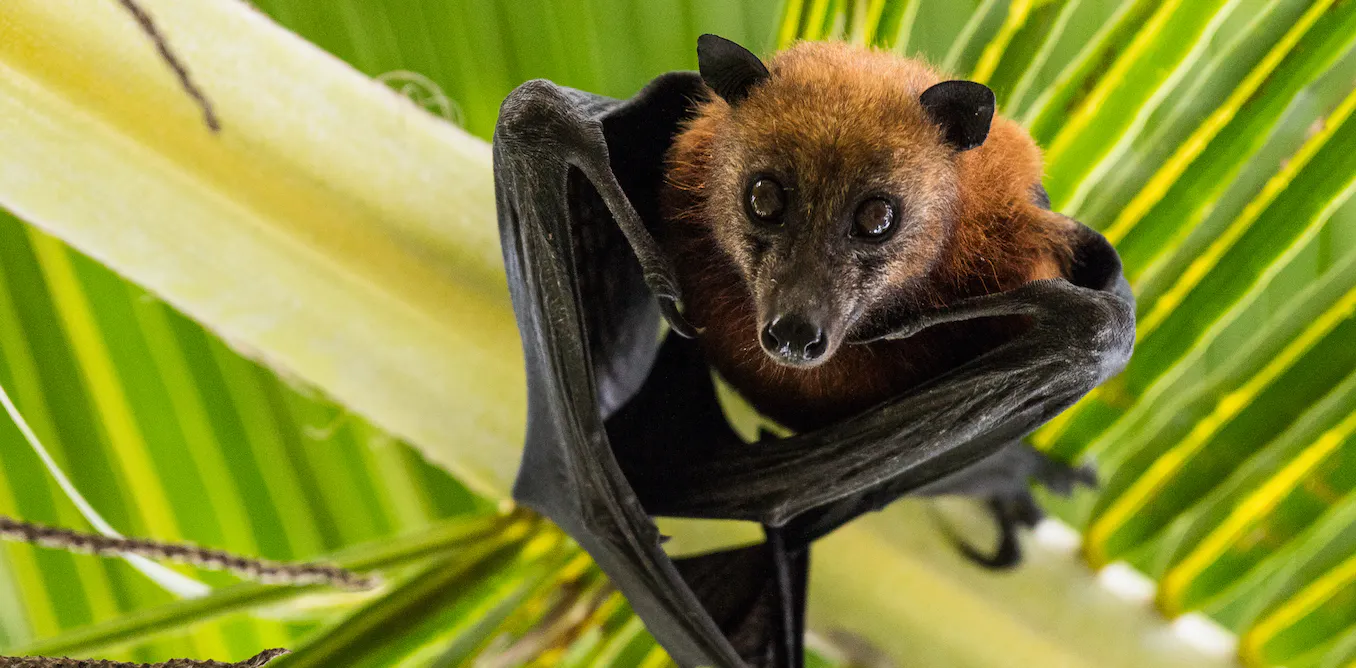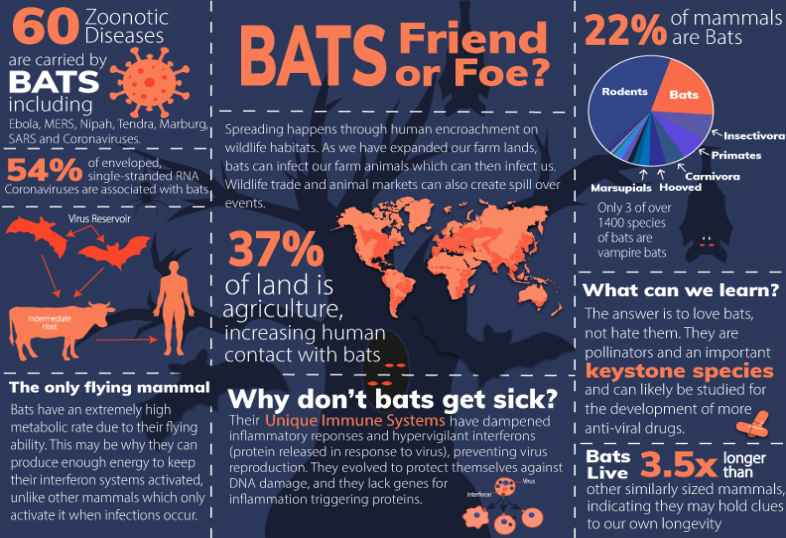Free Courses Sale ends Soon, Get It Now


Free Courses Sale ends Soon, Get It Now



Copyright infringement not intended
Picture Courtesy: theconversation.com
Context: Bat genomes provide valuable insights into immunity and cancer due to the unique characteristics and abilities of bats, as well as their role as reservoir hosts for various deadly viruses.
Key points on how bat genomes contribute to our understanding
|
Unique Characteristics of Bats |
●Bats are the only mammals capable of sustained flight, achieved through several genetic adaptations. Their wings, similar to a human hand with elongated fingers and a thin membrane of skin, enable efficient flight. ●Bats have a unique immune system that allows them to carry viruses without getting sick, making them excellent models for studying host-virus interactions. ●Bats have relatively long lifespans and exhibit natural resistance to various diseases, including cancer. This resistance has intrigued scientists, especially considering their role as reservoir hosts for many deadly viruses. ●Bats use echolocation, a biological sonar system, to navigate and locate prey, allowing them to function in complete darkness. |
|
Role in Ecosystem |
●Fruit bats (megabats) are essential pollinators for many plant species, contributing to the biodiversity of ecosystems and agriculture. ●Insect-eating bats (microbats) help control insect populations, reducing the need for pesticides and aiding in natural pest control. |
|
Viral Reservoirs |
●Bats are ancient hosts of viruses, and studying their genomes aids in understanding the evolution of viruses, which is crucial for predicting and preventing pandemics. ●Bats and viruses have likely co-evolved, leading to unique adaptations in both hosts and pathogens. Understanding these adaptations can inform antiviral drug development. |
|
Genome Sequencing |
●Bats have a relatively small genome, around 2 billion bases, and scientists have been sequencing various bat species' genomes to understand their unique traits. ●Studies comparing the genomes of different bat species revealed genes related to metabolism and immune response that have undergone positive selection. This means these genes have evolved to enhance bats' biological functions in these areas. ●Studying genetic variation within bat species provides insights into their adaptability to changing environments and diseases. |
|
Immunity Insights |
●Bats have a unique set of immune-related genes, constituting 2.7-3.5% of their genome, compared to 7% in humans. Some of these genes have undergone positive selection, enabling bats to control virus spread and mitigate inflammatory responses. ●Bats can host multiple viruses simultaneously without falling ill themselves, a phenomenon known as co-infection. Their immune system seems to shield them from the clinical effects of these viruses, which can be deadly to humans. ●Understanding the genetic basis of bat immune receptors can provide insights into the evolution of adaptive immunity in mammals. |
|
Genomic Discoveries |
●Studying genes associated with echolocation can reveal how this unique trait evolved and how it impacts other sensory and cognitive abilities in bats. ●Analyzing gene expression patterns across bat species helps identify conserved pathways related to immunity and cancer resistance. |
|
Long-Read Sequencing |
●Long-read sequencing enables the detection of large structural variations in the genome, which might be associated with disease resistance or susceptibility. ●Studying DNA methylation and histone modifications in bats can provide insights into the regulation of immune response genes. |
|
Cancer Resistance |
●Identification of unique bat genes involved in tumour suppression can inspire targeted therapies for human cancers. ●Understanding the efficiency of DNA repair mechanisms in bats can provide clues for enhancing DNA repair in cancer patients. |
|
Zoonotic Disease Threat |
●With increasing deforestation and human-animal interactions, there is a higher risk of zoonotic disease outbreaks. Understanding bat genomes and their unique immune responses through advanced sequencing technologies could help predict and manage these outbreaks without disrupting natural balances. ●Genomic data can be integrated into predictive models to assess the risk of zoonotic spillover events, aiding in the prevention of future pandemics. ●Combining genomic data from bats, other wildlife, and humans promotes a holistic understanding of disease dynamics, supporting the One Health approach to disease control. |

Picture Courtesy: www.calpaclab.com
Conclusion
|
PRACTICE QUESTION Q. What are the key challenges and innovative approaches in ecosystem restoration efforts, and how can communities and governments collaborate effectively to restore and sustain diverse ecosystems for future generations? |
© 2024 iasgyan. All right reserved